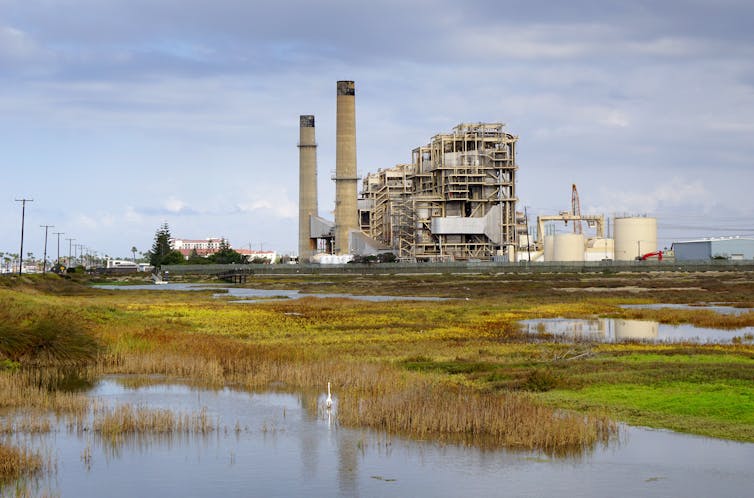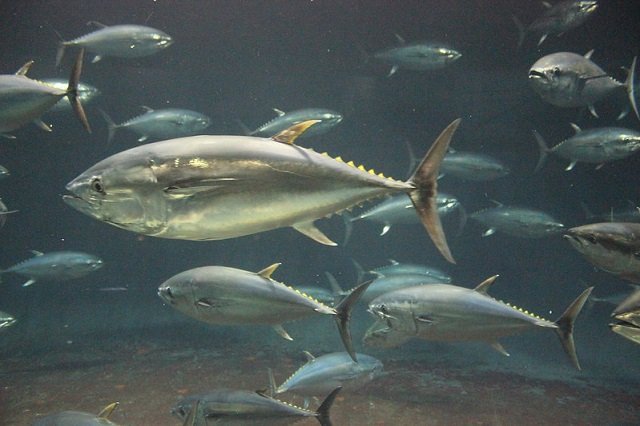
A team of Brazilian researchers has measured methane emissions for the first time in the production of tilapia (Oreochromis niloticus) in cage nets for tropical conditions.
Results come from controlled studies in three secondary tributaries of the Ilha Solteira reservoir (SP): Formoso, Cancan, and Ponte Pensada. In these areas, the evaluated fish farms produce an average of 800 tonnes of tilapia in Formoso and 3,000 tonnes in the other two effluents.
Approximately 75% of the ebullitive (methane) emissions in tilapia production were recorded at cage sites compared to other areas of the reservoir.
However, the bubbles were sporadic events and did not occur throughout the entire area of the breeding cages.
Greenhouse gas emissions
Greenhouse gas (GHG) emissions are due to natural processes of transformation of organic matter and other chemical compounds in the water column and sediments.
Activities that contribute to the supply of organic matter and other degradable substances emit greenhouse gases, contributing to the increase in emissions. This may be the case of fish farming and other activities around the reservoir.
According to Marcelo Gomes da Silva, from the Programa de Bolsas do Conselho Nacional de Desenvolvimento Científico e Tecnológico (CNPq), little is known about the contribution of fish farming to GHG emission or removal processes in tropical reservoirs.
One of the main concerns associated with fish farms is related to the release of considerable amounts of organic matter into the water, from unconsumed food and fish excreta, which can become greenhouse gases.
Greenhouse gases produced in bodies of water are transported to the surface mainly by two means:
Stay Always Informed
Join our communities to instantly receive the most important news, reports, and analysis from the aquaculture industry.
- Diffusive flow: gases formed in sediment and water are transported through the water column to the atmosphere.
- Ebullitive: originated by bubbles formed in the substrate that are released when water is inhaled or when the bubble exceeds hydrostatic pressure, crossing the water column and being released into the atmosphere.
To obtain reliable results, researchers studied both types of transport.
GHG production
Diffusive, although common and occurring throughout the reservoir, tends to have lower methane emissions compared to bubble emissions.
The study in the Ilha Solteira reservoir showed that the average methane transmission by diffusion was 5 milligrams per square meter per day.
On the other hand, ebullitive methane emissions, which are less frequent, emitted bubbles of 5 to 10 thousand milligrams per square meter per day.
Internationally conducted studies barely evaluated bubble emissions as this is a characteristic of tropical reservoirs, in warmer water areas with a lot of available organic matter.
For inclusion of data in national inventories, tropical area researchers suggest considering ebullitive emissions.
“When we analyze methane with modeling to determine this gas flow out of the water column into the atmosphere, or using equipment that only measures atmospheric air over the reservoir, these methods cannot capture these bubbles,” observed Gomes da Silva.
Methane production from tilapia farming cages
The main importance of this work is to show that tilapia farming cages not only increase greenhouse gas emissions in the form of methane but also significantly increase the ebullitive flux, i.e., the number of bubbles and the impact of methane emissions. Therefore, it is essential to understand the two types of gas transport to the atmosphere.
According to Silva, the observed increase in methane emissions was associated with the tilapia production area. The observed increase was six times for diffusive metabolism and about 2000 times for ebullitive emissions compared to external areas of the farming cage.
Another important factor to consider is that there was no significant difference in methane emissions when comparing areas around the farming cages. This fact suggests that aquaculture production’s effects on emissions are restricted to their direct action. The influence of tilapia farming on methane emissions is restricted to the farming cage sites, demonstrating that the impact is local and dissipates into the environment.
Reducing GHG emissions
Factors such as high concentrations of carbon and phosphorus in water and sediment have been associated with increased emissions. Therefore, proper feeding, good management practices, and strategies adopted for cage fish farming will allow producers to improve productivity and reduce methane emissions.
Scientists point out that establishing cage fish farming in a tropical reservoir must consider the carrying capacity, seasonality, and amount of carbon to minimize methane emissions.
“It is worth noting that the limits defined in this study refer to the characteristics of the Ilha Solteira reservoir. Therefore, we suggest that nutrient concentrations in sediment and water be studied for better reservoir management and the selection of new areas for cage net installation,” highlighted Silva.
Conclusion
“These findings provide valuable information that tilapia farming in net cages in reservoirs may be associated with higher methane emissions, but the impact is restricted to a small area when detected in the reservoir’s total area. This is important information to consider and indicates that fish farming has the potential to be one of the animal production activities with the smallest carbon footprint,” explained Paul Packer, Embrapa Meio Ambiente’s general manager and one of the study’s authors.
For Fernanda Sampaio, understanding greenhouse gas emissions from aquaculture is a fundamental strategy to make it more sustainable in the new global economy. The researcher also believes that the recent study is an important step in identifying which technologies can be adopted to reduce methane emissions from fish farms in reservoirs, making the activity more sustainable.
Reference (open access):
Marcelo Gomes da Silva, Fernanda G. Sampaio, Ricardo Hideo Taniwaki, Nathan Oliveira Barros, Plínio C. Alvalá, Viviane Cristina Bettanin, Danilo Trovo Garofalo, Danilo Oliveira da Costa, Joaquim Ernesto Bernardes Ayer, Thassia Pine Gondek, Ana Paula Packer. 2021. Increase of methane emission linked to net cage fish farms in a tropical reservoir, Environmental Challenges, Volume 5, 2021, 100287, ISSN 2667-0100, https://doi.org/10.1016/j.envc.2021.100287.
Editor at the digital magazine AquaHoy. He holds a degree in Aquaculture Biology from the National University of Santa (UNS) and a Master’s degree in Science and Innovation Management from the Polytechnic University of Valencia, with postgraduate diplomas in Business Innovation and Innovation Management. He possesses extensive experience in the aquaculture and fisheries sector, having led the Fisheries Innovation Unit of the National Program for Innovation in Fisheries and Aquaculture (PNIPA). He has served as a senior consultant in technology watch, an innovation project formulator and advisor, and a lecturer at UNS. He is a member of the Peruvian College of Biologists and was recognized by the World Aquaculture Society (WAS) in 2016 for his contribution to aquaculture.




